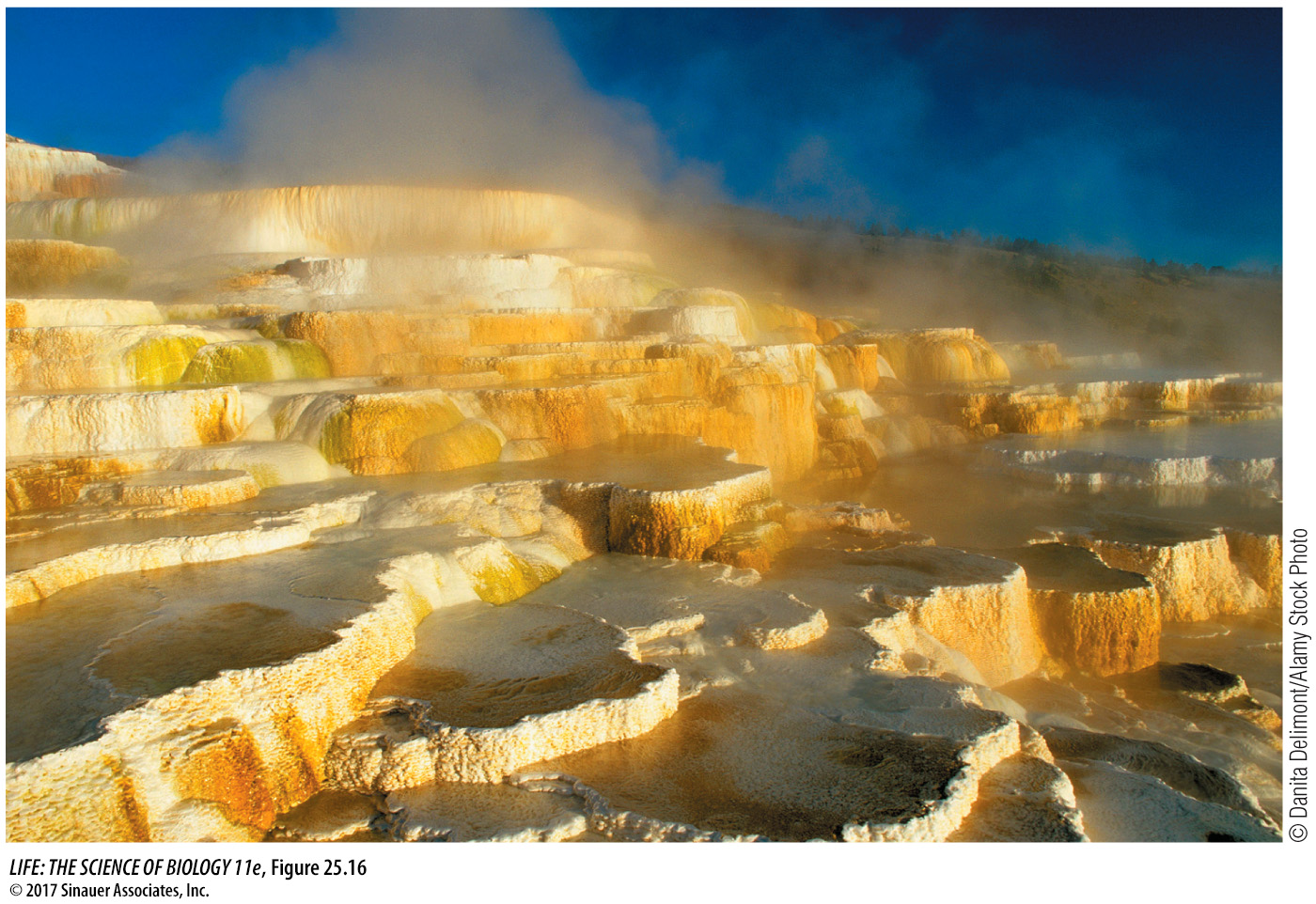Prokaryotic archaea live in extremely diverse environments
Most known crenarchaeotes are either thermophilic, acidophilic (acid loving), or both. Members of the genus Sulfolobus live in hot sulfur springs at temperatures of 70°C to 75°C. They become metabolically inactive at 55°C (131°F). Hot sulfur springs are also extremely acidic. Sulfolobus grows best in the range from pH 2 to pH 3, but some members of this genus readily tolerate pH values as low as 0.9. Most acidophilic thermophiles maintain an internal pH of 5.5 to 7 (close to neutral) in spite of their acidic environment. These and other crenarchaeotes thrive where very few other organisms can even survive (Figure 25.16).

Some species of euryarchaeotes are methanogens: they produce methane (CH4) by reducing carbon dioxide as the key step in their energy metabolism. All of the methanogens are obligate anaerobes (see Key Concept 25.3). Comparison of their rRNA gene sequences has revealed a close evolutionary relationship among these methanogenic species, which were previously assigned to several different groups of bacteria.
Methanogenic euryarchaeotes release approximately 2 billion tons of methane gas into Earth’s atmosphere each year, accounting for 80 to 90 percent of the methane that enters the atmosphere, including that produced in some mammalian digestive systems. Approximately a third of this methane comes from methanogens living in the guts of ruminants such as cattle, sheep, and deer, and another large fraction comes from methanogens living in the guts of termites and cockroaches. Methane is increasing in Earth’s atmosphere by about 1 percent per year and contributes to the greenhouse effect. Part of that increase is due to increases in cattle and rice production and the methanogens associated with both.
Another group of euryarchaeotes, the extreme halophiles (salt lovers), live exclusively in very salty environments. Because they contain pink carotenoid pigments, these archaea are sometimes easy to see (Figure 25.17). Extreme halophiles grow in the Dead Sea and in brines of all types. The reddish pink spots that can occur on pickled fish are colonies of halophilic archaea. Few other organisms can live in the saltiest homes that the extreme halophiles occupy—

Some of the extreme halophiles have a unique system for trapping light energy and using it to form ATP—
Another member of the Euryarchaeota, Thermoplasma, has no cell wall. It is thermophilic and acidophilic, its metabolism is aerobic, and it lives in coal deposits. Its genome of 1,100,000 base pairs is among the smallest (along with that of the mycoplasmas) found in any free-
Most known prokaryotic archaea are crenarchaeotes or euryarchaeotes, but studies of extreme environments have identified several small lineages that are not closely related to either of these major groups. For example, the korarchaeotes and thaumarchaeotes are known only from DNA isolated directly from hot environments. Neither group has been grown successfully in pure culture. The thaumarchaeotes oxidize ammonia and may play an important role in the nitrogen cycle.
The lokiarchaeotes were discovered in 2015 by sequencing environmental samples from near a hydrothermal vent called Loki’s Castle deep in the Arctic Ocean. An organism’s genome was detected and sequenced from this deep-